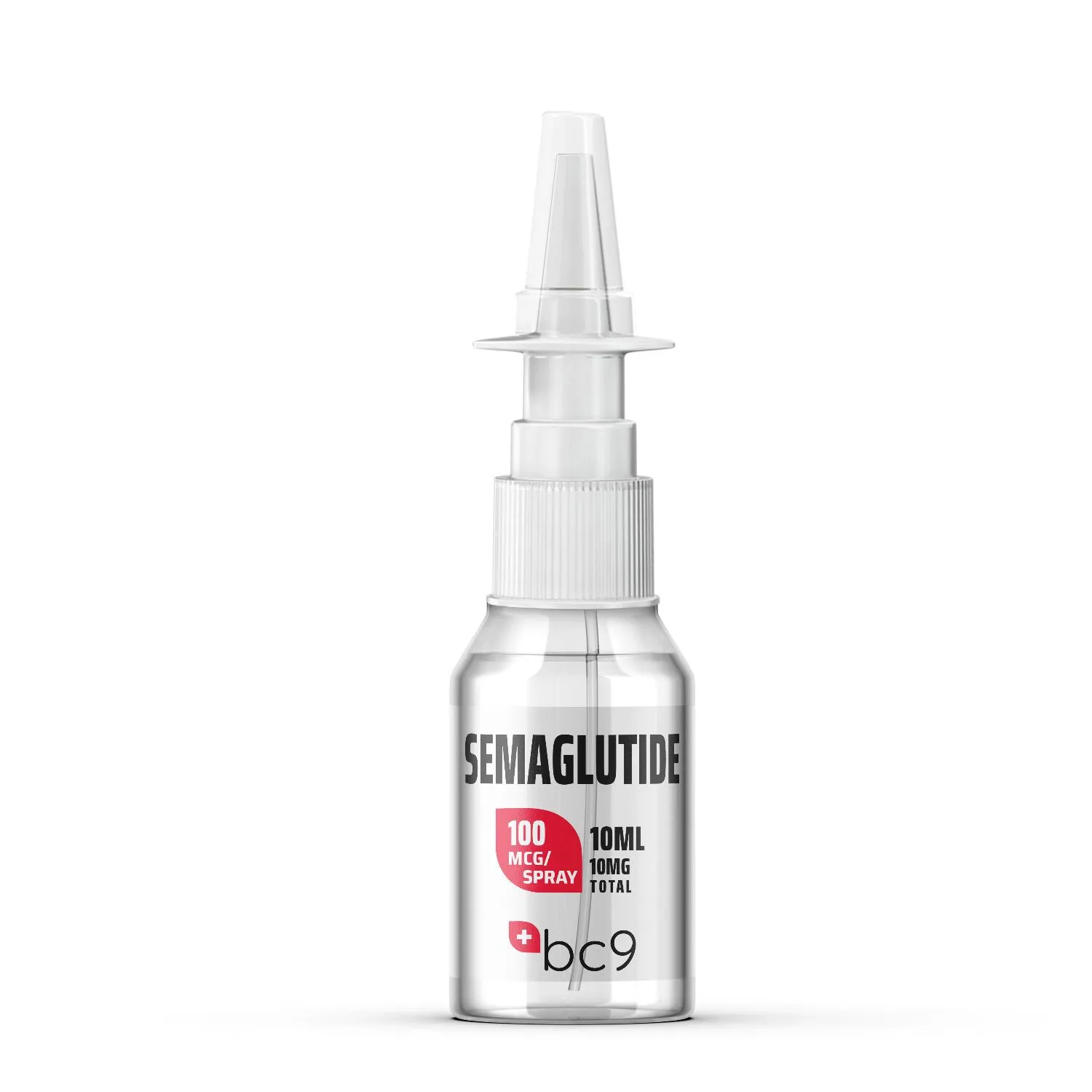How Semaglutide Nasal Spray Works: Fast-Absorption Research Insights

Understanding Semaglutide Nasal Spray
Semaglutide nasal spray is a research-focused GLP-1 analog designed for rapid absorption and mechanistic evaluation through intranasal delivery. Its formulation allows investigators to explore how peptide-based compounds behave when delivered through the highly vascular nasal mucosa, offering a unique look at absorption kinetics and receptor interactions.
Mechanism of Action: GLP-1 Receptor Engagement via Intranasal Pathways
Semaglutide, as a glucagon-like peptide-1 receptor agonist (GLP-1 RA), interacts with GLP-1 receptors found primarily in metabolic, gastrointestinal, and central pathways. Research focuses on the following mechanistic attributes:
- Receptor Signaling: GLP-1 receptor activation influences insulin signaling, satiety pathways, and glucose homeostasis under controlled laboratory conditions.
- Neural Pathway Interactions: Intranasal delivery provides a method for researchers to examine possible nose-to-brain transport routes.
- Peptide Stability: Formulation techniques such as buffer optimization and molecular stabilization are key to maintaining semaglutide's integrity when administered intranasally.
Fast Absorption Dynamics Through Intranasal Delivery
The nasal cavity’s extensive vascular network supports rapid absorption studies. When semaglutide nasal spray is evaluated:
- Bioavailability Kinetics: Researchers analyze how much of the compound permeates epithelial layers compared to traditional delivery models.
- Onset of Action Tracking: Intranasal routes provide an accelerated window for observing early-phase receptor activation.
- Transport Efficiency: Studies often examine mucociliary clearance rates, enzymatic degradation factors, and deposition patterns.
Formulation Technology Behind Semaglutide Nasal Spray
Effective research formulations typically involve:
1. Peptide Stabilization Matrices
Scientists utilize excipients to maintain semaglutide’s structural stability and prevent denaturation during storage and delivery.
2. Particle Size Optimization
The spray’s droplet size affects deposition depth, epithelial contact, and absorption rate.
3. Buffer and pH Balancing
Maintaining physiological pH helps preserve peptide activity and reduces degradation related to nasal enzymes.
Comparative Insights: Nasal Spray vs. Other Research Delivery Methods
Studies often compare:
|
Delivery Route |
Key Focus in Research |
Potential Advantages |
|
Intranasal |
Absorption speed, nose-to-brain pathways |
Rapid uptake, bypasses first-pass metabolism |
|
Oral |
Stability through GI tract |
Convenient dosing models |
|
Injectable |
High bioavailability in plasma |
Direct systemic exposure |
Intranasal delivery stands out for enabling accelerated pharmacokinetic observation under controlled lab conditions.
Mucosal Permeability and Membrane Transport
Investigators often focus on how semaglutide interacts with:
- Tight junction protein modulation
- Lipid bilayer permeability
- Enzyme-resistant peptide modifications
These elements help researchers evaluate how effectively semaglutide traverses epithelial barriers.
Pharmacokinetic Research Focus Areas
Studies involving semaglutide nasal spray frequently analyze:
- Absorption rate constants (Ka)
- Plasma-time concentration curves
- Peak concentration timing
- Comparative bioavailability across delivery routes
Advanced modeling software may further characterize how intranasal absorption correlates with GLP-1 receptor activation timelines.
Safety, Stability, and Research Considerations
Within controlled laboratory settings, researchers typically examine:
- Irritation potential of intranasal formulations
- Long-term storage stability
- Viscosity and spray pattern precision
- Impact of chronic exposure on nasal tissues
These parameters support consistent, reproducible data across research environments.
Future Research Directions for Semaglutide Nasal Spray
Emerging areas of investigation include:
- Enhanced nose-to-brain transport modeling
- Next-generation peptide stabilization carriers
- AI-driven prediction of absorption variability
- Comparative performance with other GLP-1 analog formulations
Such advancements aim to refine understanding of intranasal peptide delivery mechanisms and its potential in broader scientific contexts.
Conclusion
Semaglutide nasal spray offers a compelling avenue for studying rapid peptide absorption, GLP-1 receptor interaction, and innovative intranasal delivery science. Through detailed analysis of formulation, absorption kinetics, and mechanistic pathways, researchers gain deeper insights into how semaglutide behaves when administered through the nasal mucosa. The expanding body of research continues to shape the future of peptide-based delivery models and advanced intranasal technologies.
- AI
- Vitamins
- Health
- Admin/office jobs
- News
- Art
- Causes
- Crafts
- Dance
- Drinks
- Film
- Fitness
- Food
- Jocuri
- Gardening
- Health
- Home
- Literature
- Music
- Networking
- Alte
- Party
- Religion
- Shopping
- Sports
- Theater
- Wellness


